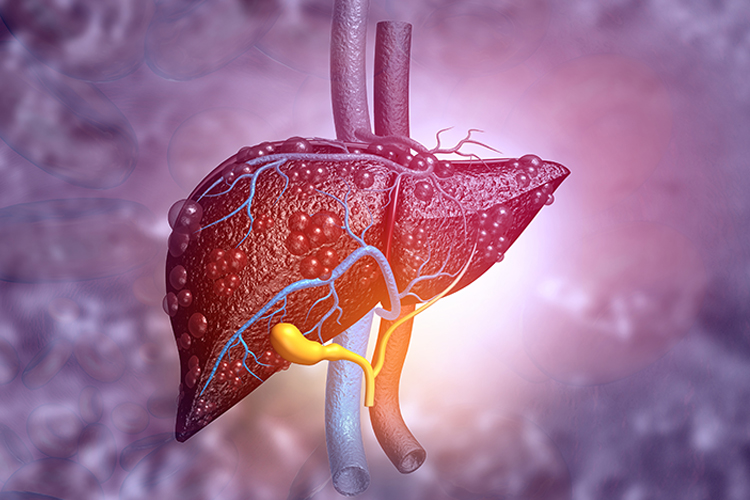Exploring liver disease therapies
Posted: 29 November 2023 | Taylor Mixides (Drug Target Review) | No comments yet
Ochre Bio is at the forefront of therapeutic innovation, focusing primarily on liver diseases. Their core mission revolves around the development of RNA therapies, primarily in the preclinical stage, using a ‘human-first’ approach. They employ real human tissue, such as ‘liver slices’ and whole human livers, in their preclinical pipeline to gain valuable insights into the efficacy of our therapies on diseased human tissue, well before they enter clinical trials.


What does Ochre Bio do, can you give me an overview of your work?
Our primary focus is to design and develop RNA therapies for liver diseases. Using humans as the model, we use an approach called deep phenotyping to explore the relationships between cells, genes, biological pathways and patterns of disease. Our team of chemists then uses this information to develop novel therapies. What makes us unique is our human-first approach to therapy development: we use real human tissue throughout our preclinical pipeline – in the form of ‘liver slices’ and whole human livers – to test our therapies on diseased human tissue.
By doing this, we get a superior understanding of which therapies will and will not work in human biology before a clinical trial. At present, we test discarded human livers deemed not good enough for transplant. By testing on these livers, our intention is to learn how to regenerate poor quality livers and, in the process, make these livers viable for transplantation.
Why are you focusing on liver disease?
The Centre for Disease Control and Prevention currently ranks chronic liver disease and cirrhosis as the 9th leading cause of death in the US, with similar mortality rates reported by the World Health Organisation for Europe. In addition, primary liver cancer, a complication of cirrhosis, is now one of the top five causes of cancer deaths in 90 countries, and mortality is expected to increase by a further 50 percent over the next 20 years.
The primary treatment option available is a liver transplant however, with an aging population in much of the world and the impact of modern diets, there are fewer high-quality livers available for transplantation. As a result, waiting lists continue to grow. Our mission is to develop alternative treatments for liver disease, so no one dies whilst awaiting a transplant operation.
Additionally, from a scientific standpoint, the liver is absolutely fascinating. It plays a critical role in human health – interconnecting with many other organs and systems throughout the body. By zoning in on the liver, we enrich our knowledge of multiple domains of human health.
Can you explain some of your novel approaches for the preclinical stages of liver therapy development?
Ochre Bio has built one of the most advanced human validation pipelines that exists anywhere in the world. Our team has set up a unique, first-of-its-kind network of medical facilities to collect liver samples that we use as valuable and vast sources of data. We have also developed cell and tissue culture models that allow for the study of key processes that occur throughout the liver disease trajectory.
At our state-of-the-art liver ICU facility in New York City, we are first in the field to develop extended near-physiological liver perfusions, and to temporally monitor about 50 histological and physiological parameters. This allows us to observe the real-world, real-time impact of our therapies on human livers, for up to 5 days, in a controlled – yet physiologically relevant – environment.
Why is your “human first” approach so important for therapy development?
We invest in human validation platforms because animal models are poor predictors of liver disease. Our human first approach allows us to test therapies directly in real human physiologies, bypassing the limitations of lab-grown cells, and providing a much more realistic scenario of how a therapy will react in the human body. This validation helps us more clearly understand which therapies are likely to succeed in a human, and increase the likelihood of successful clinical trial success – even at the pre-clinical stage.
When combined with our in-house GMP-level RNA chemistry lab, Ochre Bio is able to progress from a new target to generating human data on a lead therapy in days. Given the fact that the typical company can spend 10 or more years to progress from identifying a new target to generating human data on a lead therapy, this pace change could transform the future of drug development as we know it.
However, it’s important to note that while Ochre Bio has achieved significant advances in human modelling, current models do not extend beyond two weeks of study. Animal models supplement our human data with information on safety and longer term effects.
What sort of techniques do you use to analyse genomic data and identify novel drug targets?
By the end of 2025, we will expect to have analysed ethnically diverse genomic data from over 80,000 liver samples. During our analyses, with the goal of identifying novel drug targets, we use unguided approaches (allowing the algorithms to make sense of the data independently) in parallel with guided approaches (‘teaching’ the algorithms how to make sense of and sort the data).
Our unguided approaches help us to discover hidden or unexpected patterns or features within our data. However, we also deploy a guided approach in the form of our ML recommendation engines, which we’ve trained to prioritize certain genes as potential drug targets based on known information or patterns in the data. As well as revealing some truly unique insights that guided approaches miss, the engines enable us to work at pace and to improve screening success rates from a few percent to ~40 percent.
How do you approach building a team of talented biologists, engineers and chemists?
We pride ourselves on being a diverse team which brings together people with a breadth and depth of experience. We’re bound together by our mission to redefine liver disease. We use three laws as the foundations of our company ethos.
The first is Clarke’s Third Law, which states that “Any sufficiently advanced technology is indistinguishable from magic.” This reminds us that our understanding of what is possible is relative to our level of technological knowledge, and that progress and innovation often come from pushing the boundaries of what is currently believed to be possible. Clarke’s Law is an encouragement to be bold and ambitious in our work, and not to fear failure.
The second is Murphy’s Law: “What can go wrong, will go wrong” which reminds us that although we will encounter setbacks and failure, what matters is how we respond and learn, and how quickly convert them into successes.
Finally, our third law – Wheaton’s Law – underpins our commitment to respect and collaboration. Following this law creates a safe space for experimentation and bravery in our work, where there is no fear of unjust criticism from our colleagues if we don’t succeed the first time around.
What does the future of Ochre Bio look like?
The horizon for Ochre Bio is incredibly exciting! We’re looking to nominate our first therapy for clinical testing in the near future – a significant milestone in our journey. We are also in the midst of forging a number of significant partnerships in the pharma sector to further accelerate the pace of our research.
About the author


Ochre Bio
Quin is a medical doctor with further degrees in genetics, mathematics, computational biology, and a doctorate in systems genomics, from Oxford and Cambridge Universities. He started his first drug discovery liver genomics company 17 years ago. More recently he founded and led Novo Nordisk’s Advanced Genomics Department, again focused on liver disease. Frustrated with the lack of therapeutic innovation in chronic diseases, Quin co-founded Ochre Bio, a liver RNA therapeutics company that differentiates itself in the ability to generate large-scale human discovery and validation data at its global R&D sites in Europe, Asia, and the US. A key innovation from Quin’s team’s at the intersection of dry-lab (machine learning) and wet-lab has been the ability to progress a hit to generating human data on the lead within weeks, not years. They do this using whole human livers that they maintain on machines.
Related topics
Drug Discovery, Drug Leads, RNAs, Targets
Related conditions
Liver disease
Related organisations
Ochre Bio








